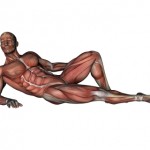Two days ago I attended a wedding at “Notre Dame Des Victories” Church in San Francisco. The reception was held at the famous “Palace” hotel nearby. Pictured here are the bride and groom, Bill and Camille, as they “kick off” the wedding reception and their married life with “The First Dance”. The photo only begins to reveal the exquisite beauty of the Palace hotel with its Beaux Arts architecture and signature chandeliers…you had to be there to fully appreciate it.
This day was memorable to me, not only because of the extraordinary beauty and elegance of the Church and the Palace hotel. I was also deeply moved by the detailed planning of the event which made it not only a celebration of new beginnings for this couple but an honoring of “past” new beginnings. The church, for example was the same church that the grooms parents had been married in. The reception was held in the exact location that the bride’s parents had held their reception. Pictures of these events of the past were displayed for wedding guests to see. How cool is that? When wedding guests entered the church they were given a program of events. In this program was the following collective message from the bride and groom. It reads (in part)…”Thank you especially to our parents for raising us to be the perfect person for the other, and for making this wonderful day and every other day possible”. On reading this I was struck by this simple but profound acknowledgement of the chain of events that is always guiding each of us to experience the exact perfect moment of “now”. Our parents are, of course our most direct link in the chain, but in a larger sense everyone we meet is part of the chain. I reflected upon this often during the course of the evening.
In the days following the wedding, I found myself reflecting on the fact that events such as weddings, graduations, and other “rites of passage” are always very emotional…especially for me, as I grow older. What is that “prick” of tears that begins to spill over during the wedding procession? What is that euphoric joy mixed with melancholy that overcomes us when listening to the bride’s father as he remembers the birth of his daughter? Thinking about it now, it occurs to me that weddings, graduations, and other rites of passage are simultaneously a beginning and an ending. It’s almost too much to process, in a way, that knowledge that you are the witness to a shift. Change is actually happening all the time, but with transitional events it seems to occur so suddenly…we don’t always see it coming. I guess that’s why we need the ritual…to celebrate, acknowledge, and maybe even grieve a bit for what has been lost in order to make room for what is now gained.
As the evening wore on with the wedding reception, it felt so important that the music reflected the music of all of the generations of wedding guests. I have no idea if this was intentional or not, but it seemed that the music was planned so that it began with “baby boomer” and even earlier music…and ended up with contemporary stuff…the stuff that seems utterly “undanceable” to me. The kickoff song “I’m a believer” by the monkees was so perfect. At that moment I think all of us there felt that we were “true believers”. We believed in what was happening right then and right there. I noticed a full participation happening.
Toward the end of the evening (for me), I had a conversation with someone close to my age range. She lamented that when she was younger she could “dance all night”….no longer. No longer for me either. There was some sadness with this realization, but also some relief…I have to say. I think of Maurice Chevalier in the movie “Gigi” when he sings,..”I’m so glad that I’m not young anymore”. In the course of this song this dashing French actor of the 1930’s and1940’s speaks of how he can now just sit back and watch the “drama” of the young as their lives unfold before him.
I kind of feel the same way. In the last hour before I left this memorable day it was time to just “sit back and enjoy the show”…. and that’s exactly what I did.










